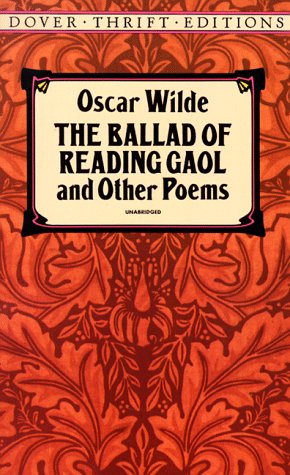

The poet highlights the condition of the prisoner by describing the man who was sentenced to die and the other prisoners. For him, the time spent in prison becomes an endless night spent while being tormented by a guilty conscious. That man begins to wither away and slowly loses all hope in the future and becomes a man who waits to die.

The poem focuses on the pain a man suffers when he is deprived of liberty. We are thankful for their contributions and encourage you to make your own. New York: Vintage Books.These notes were contributed by members of the GradeSaver community. The epitaph on Wilde’s tomb was excerpted from the poem:Įllmann, Richard (1988). Leading up to the release of the poem, Wilde understood that he was no longer attempting to impress the upper classes of society, and instead wished for it to be published in Reynolds Magazine, where he claimed that then it would be “read by his peers” who were now among “the criminal classes.” The poem, which was published by Leonard Smithers on 13 February 1898 under the name “C.3.3.”, which stood for cell block C, landing 3, cell 3, sold enough to give him some income until he died just over two years later. During his imprisonment, a man named Charles Thomas Woolridge was hung for the murder of his wife, a scene which Wilde describes throughout the poem. Wilde was imprisoned here from 23 November 1895 until after being moved three other times following his conviction of gross indecency on.

The poem documented the ghastly conditions of his experience in prison at Reading Gaol, located in Reading, Berkshire, England, which was the popular name of a former prison, known officially as HM Prison Reading. Wilde wrote what ended up being his final published poem during his lifetime, titled “The Ballad of Reading Gaol”, while in exile in Berneval-Le-Grand, France, after his expulsion from prominent British society.


 0 kommentar(er)
0 kommentar(er)
